https://ebookgate.com/product/human-development-alife-span-view-fifth-edition-robert-v-kail/ Download more ebook from https://ebookgate.com

More products digital (pdf, epub, mobi) instant download maybe you interests ...
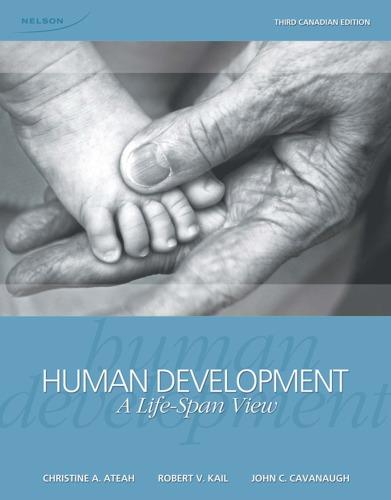
Human development a life span view Third Canadian Edition Cavanaugh
https://ebookgate.com/product/human-development-a-life-span-viewthird-canadian-edition-cavanaugh/

Children and Their Development 5th Edition Robert V. Kail
https://ebookgate.com/product/children-and-their-development-5thedition-robert-v-kail/
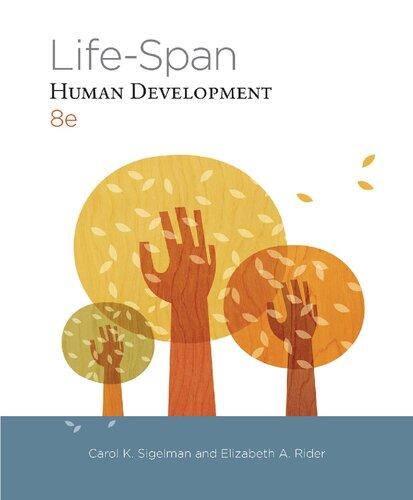
Life Span Human Development 8th Edition Carol K. Sigelman
https://ebookgate.com/product/life-span-human-development-8thedition-carol-k-sigelman/

Chapter Development Across the Life Span 6th Edition
Robert S. Feldman
https://ebookgate.com/product/chapter-development-across-thelife-span-6th-edition-robert-s-feldman/
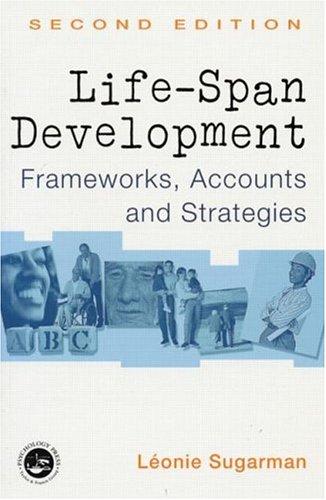
Life Span Development Frameworks Accounts and Strategies 2nd Edition
Leonie Sugarman
https://ebookgate.com/product/life-span-development-frameworksaccounts-and-strategies-2nd-edition-leonie-sugarman/

Cytokines in Human Health 2007th Edition Robert V. House
https://ebookgate.com/product/cytokines-in-human-health-2007thedition-robert-v-house/

The Systems View of Life A Unifying Vision Capra F.
https://ebookgate.com/product/the-systems-view-of-life-aunifying-vision-capra-f/

Human Capital and Institutions A Long Run View 1st Edition David Eltis
https://ebookgate.com/product/human-capital-and-institutions-along-run-view-1st-edition-david-eltis/

Moral motivation through the life span 1st Edition
Gustavo Carlo
https://ebookgate.com/product/moral-motivation-through-the-lifespan-1st-edition-gustavo-carlo/
Another random document with no related content on Scribd:
and country pitted with shell holes and strewn with wire; however, it was accomplished and in time. The next morning the attack developed according to plan. All accounts of it agree in according the highest possible praise to the 8th East Surrey Regiment, which unit bore the brunt of an action which was a complete success, all objectives being carried with comparatively few casualties. The principal opposition met with came from Priez Farm, which from the very start caused much trouble to the East Surreys, which was, however, not sufficient to stay that regiment’s triumphant progress. The leading companies of the Buffs were also temporarily held by machine guns which had allowed the Surrey men to pass them; these guns necessitated a somewhat wider detour for those that followed than had been anticipated. However, with considerable management and able leadership, especially perhaps on the part of Captain Stronge, of D Company, the difficult advance and still more difficult wheel, during which seven thousand yards was covered, was accomplished. When near Rancourt C and D Companies wheeled to the north and occupied the high ground east-north-east of Fregicourt. The enemy was completely surprised and demoralized and began to stream away northward from Fregicourt, many being killed by C and D Companies while trying to escape to Sailly Saillisel along the valley. The difficult task of seizing the high ground in rear of the enemy holding Fregicourt was successfully carried out and the division had done its part in the Second Battle of Bapaume.
The Buffs’ casualties on this occasion were only two; Captain Stronge, Lieut. Wellman and 2nd Lieut. Lawrence were awarded the M.C. for their gallant conduct on this occasion.
A very large number of prisoners were taken. Receipts, for instance, were given to the Buffs for fourteen officers and nearly eight hundred men, though a good many of these were not actually captured by the battalion. Captain Whitmarsh, of B Company, was after the action ordered to send forward two platoons as patrols into St Pierre Vaast Wood and towards Sailly Saillisel, and as the enemy appeared to be greatly demoralised the 7th West Kent was ordered to attack the village at 7 p.m., which move necessitated a further
advance on the Buffs’ part to conform. During the operations between the 22nd August and the 1st September the 7th Buffs had 3 officers killed and 14 wounded; 26 men killed, 84 wounded and 55 missing.
On the 2nd the 53rd Brigade passed through to continue the pursuit. This day was a proud if a sad one for the 7th Battalion, for the commanding officer, Lt.-Colonel Ransome, D.S.O., M.C., who had so often led it to victory or stood in the gap during a necessary retreat, was removed on promotion to command the 170th Infantry Brigade of the 57th Division.[32] Next day Lt.-Colonel Curtis, D.S.O., joined on appointment to the command. On the 4th September the battalion marched to Trones Wood, the division, as has been seen, being relieved by the 12th, and it remained there training till the 16th of the month.
Two days after this relief of divisions the 6th Buffs marched into Riverside Wood on the Tordille stream. While it had been in rear the other troops had, of course, driven the enemy considerably to the eastward, for the 53rd Brigade had taken up the pursuit after the turning of the Morval position. Therefore, when on the 7th the 37th Brigade advanced through the others to take up the duties of advance guard to its division, it became its duty to attack a line of trenches which ran from Heudicourt to Guyencourt, some eight miles east of St Pierre Vaast Wood. The 6th Buffs moved into its assembly position at 4.30 a.m., having C Company on the left, D on the right, A left support and B right support. The battalion had the West Kent on its left with the Queen’s in support, and the objectives were: first, the east edge of Guyencourt; second, the high ground beyond; and third, the eastern outskirt of Epehy and the railway east of Peiziere. Both the Buffs and the West Kent had with them a section of Field Artillery, another of a Trench Mortar Battery and two sections of the Machine Gun Corps. The zero hour was 8 a.m., when an artillery barrage commenced. The enemy’s machine guns were very active from the start, and his artillery fire, though somewhat feeble at first, gradually increased in density. At 9.30 the Buffs had to report that
they were held up by numerous machine guns opposite their centre and they asked for artillery aid, which was at once arranged for, with the result that at 10.10 a.m. the battalion was in possession of Guyencourt. The second objective, the hill line east of the village, was taken at 11.15 and consolidation commenced. At 5.50 p.m. orders came to endeavour to make good Epehy and Peiziere. That evening, patrols were pushing on, and at 8 o’clock both the leading battalions reported that they were moving forward; but a little later orders came that the 47th Division would continue the attack the next morning. The day had been a successful one, but the Buffs had Captain Tuke, 2nd Lieut. Thompson and twenty men wounded, four killed and six missing.
The 47th Division experienced some trouble the next day in gaining their objective, a line of trenches two thousand yards west of the Hindenburg Line, as the nearer the Germans were driven to their vaunted series of defences the stronger their opposition became, but at last the advance, which had been temporarily held up, was successfully renewed and a line of trenches gained and consolidated. The 12th Division again relieved the 47th on the evening of the 8th, but the Buffs were told off as divisional reserve and retired to St Pierre Vaast Wood, where they remained till the 17th, training, resting and playing football.
On the 16th of September the 7th Battalion embussed for Moislains and marched east to Longavesnes in a very heavy rainstorm, and next day the officers reconnoitred the approaches to Ronssoy from the high ground near Saulcourt; meanwhile the 6th Battalion was moving into assembly positions three hundred yards west of Guyencourt, cheered before going into action again by the news that Lt.-Colonel Smeltzer had a bar to his D.S.O., and that C.S.M. Coffin and Sgt. Ashby were each to wear the D.C.M. The enemy’s opposition was now getting quite determined, and on the 18th it was arranged to assail him in force. For this purpose the 21st Division on the left, the 18th in the centre and the 12th on the right prepared to carry on the great eastward push, which had now gained some five-and-twenty miles from Albert. Put very briefly, the
35th and 36th Brigades captured the villages of Peiziere and Epehy, but owing to strong machine-gun resistance were unable to make further headway; so the 37th Brigade went forward at 3.30 p.m. to clear up the situation. The objectives were then gained and everything settled by 6 p.m.
Also, a couple of miles or so to the south-east, the 7th Battalion co-operated in an attack by the 55th Brigade on Ronssoy and the exploitation of the enemy’s position beyond the village. To amplify the stories of these attacks a little: in both cases it was noticed that the confidence of our soldiers was supreme; after years of fighting what had seemed more or less a drawn battle, victory was now daily crowning our arms, and success was looked upon as a certainty. At 6.30 the 37th Brigade, being then in reserve just north of Guyencourt, was informed that the Norfolk Regiment on its front was being hardly pressed. At 8.25 it was reported that our troops were seen retiring from Epehy pursued by a tank which appeared to be an English one, manned by a German crew. At 8.40 the brigadier of the 36th Brigade reported that his troops had gained their first objective, but had then been heavily enfiladed from the north and by three tanks, one of them being English; so the West Kent were sent off in this direction. There is no doubt that the German defence of Epehy was a resolute one and of a different type to what the British had now become accustomed to, and the Queen’s battalion, which of course belonged to the 37th (or reserve) Brigade, was ordered to keep touch with the troops to the south and, if necessary, to move round south of Epehy to do so; also a divisional order came to the brigade soon after 9 o’clock that the Buffs were to be kept in hand. By 10 o’clock the West Kent were in Peiziere, with their forward company east of the village, though the enemy’s machine guns and trench mortars were still holding out in the place. The Queen’s, with a battery, were in action two hundred yards west of Epehy. It was now decided, as things were not progressing too well, to attack formally at 3.50 p.m. with the Buffs and Queen’s, so the barrage started and these two battalions went forward, but both were held up by machine guns before the objectives were gained. Captain S. S.
Beall, Lieut. R. W. Durdle, 2nd Lieut. A. Mount and eleven men were killed, twenty-two wounded and two missing.
A considerable amount of dogged attack and equally dogged defence on the part of the enemy formed the story of the 6th Battalion up to the end of September. On the 19th the Buffs and Queen’s attacked the Germans in what were called Mule Trench, Bird Trench and Braeton Post. The Buffs had been given the two latter as objective. Very considerable machine-gun opposition was met with, but a line a hundred yards short of the objective was consolidated at 1.30 p.m. At 7.45 the “S.O.S.” signal went up from part of the 18th Division’s front and there was heavy artillery fire on our forward line, but no infantry action followed. Lieut. Brooke was wounded, one man killed, twenty-seven wounded and seven missing. The shelling continued next day, one projectile falling close to battalion headquarters and wounding two servants and three runners. At midnight on the 21st/22nd, under an artillery barrage, the West Kent, with D Company of the Buffs, made another assault which was at first unsuccessful—the opposition being most resolute. A second attempt, at 3 p.m., had better fortune and a new position was consolidated. Buffs’ casualties: seven killed and twelve wounded.
Then the 37th Brigade was relieved by the 35th and the Buffs went into the sunken road south of Epehy, where a comparatively quiet time was enjoyed till the 29th, the only time that action was called for being that on the 27th of the month the Queen’s, who were temporarily attached to the 36th Brigade, carried out another attack in conjunction with troops to the north and south of them, and this battalion was supported by C Company The Buffs in the eastern outskirts of Epehy. Sgt. Alexander got a bar to his M.M. about this time, and C.S.M. Ashby and Pte. Bellchambers that medal itself.
Meanwhile the 7th Battalion had been far from idle. In conjunction with the rest of the 55th Brigade it attacked Ronssoy on the 18th. The work was at first extremely difficult owing to adverse weather conditions, which, however, fortunately improved during the
day. The attack was led by the 54th Brigade, who were to capture and pass the village of Ronssoy. This force was to be followed by the 55th, which brigade was to emerge from the eastern edge and form up on the Green Line at 100 minutes after zero. This arrangement had the effect of so limiting the time available to the leading brigade for properly clearing or “mopping up” the village as it passed through, that it was necessary to warn the troops following to move to their places by a route south of the houses and to avoid street fighting as far as possible. The Germans, it was quite evident, expected an attack on this day and the assembly position was heavily bombarded, gas shells being so extensively used that respirators had to be worn for a considerable time. The East Surreys led its brigade, which was intended to leap-frog or pass through the 54th. The morning was wet and misty, which interfered sadly with visual signalling and caused some difficulty in keeping the proper direction. It was soon found that the ground was by no means clear, and machine guns and snipers gave a great deal of trouble. However, the men of Surrey pushed on and, emerging from the houses at the stipulated time, endeavoured to reach the Red Line, but were held up by machine guns from Lempire and Z Copse. Even the other battalions which followed met with much trouble in Ronssoy or on its borders, so many little parties remaining in hiding. The general state of this place at 9 a.m. is exemplified by the fact that the brigadier, walking alone along the road, captured thirty-four Germans himself out of various dug-outs. General Wood threw lumps of chalk and old boots into these places and took the surrender of the men who came tumbling out. These men were fully armed, but dazed and cowed. By 11 a.m. the three battalions were concentrated in the objective trenches and sunken road, but Lempire and the Copses X, Y and Z still held out. Prisoners informed our people that the Red Line was only held by two German companies, so arrangements were made to advance upon it at 5 p.m. under a creeping barrage. On the right the assaulting troops reached this line in parts, but on the left progress was very slow, as machine guns in Lempire enfiladed the advance and the copses gave much trouble; moreover, it was clear that fresh German troops had come up during
the afternoon. At 7 o’clock the attempt had to be abandoned for the time and, to prevent complete isolation, those parties which had succeeded in getting ahead were ordered back again. The struggle to get on proved a very protracted one. It is true that the 53rd Brigade captured Lempire post on the 19th, but it was not till 7 a.m. on the 20th that the Queen’s got X Copse and the Buffs Y and Z. The progress of the East Surreys was stayed by opposition from Duncan’s post. At 10 a.m. the enemy commenced a very heavy bombardment on our position, causing our advanced posts to be temporarily withdrawn to avoid casualties. The 53rd and 54th Brigades attacked the Red Line at 5.40 a.m. on the 21st, and when these were well up the 55th was brought back into divisional reserve in the village of Ronssoy. The two first-named found very bitter resistance and, indeed, only captured parts of their objectives. However, on the night of the 22nd, the 55th Brigade, marching up again to relieve the front line, managed to place the Buffs from Cat’s post to Duncan’s post and the Queen’s to the north of that, the Surreys being in brigade reserve. The 23rd of the month was a quiet day and devoted to reconnaissance, and at 6.45 on the 24th the Buffs tried Guillemont Farm, but failed owing to very strong opposition. During that night the brigade was relieved by American troops and retired to Combles. It was afterwards found that this action at Ronssoy had stayed a contemplated counter-attack on a large scale which had been planned by the enemy, the 231st German Division having been diverted to Ronssoy and rushed up to that post of danger by motor buses.
It was on the 28th that the 7th Battalion came up again into the area of active operations, moving on that day by bus to Guyencourt and bivouacking in a sunken road two thousand yards east of the village, ready for an attack next morning, their comrades of the 6th being close by just outside Epehy. On this Michaelmas Day the 12th Division, with an American one on the right and the 47th English on the left, attacked the Hindenburg defences in the neighbourhood of Vendhuille, while the rôle of the 7th Buffs was to assist in protecting
the left flank of the Americans and to “mop up” Vendhuille village later on.
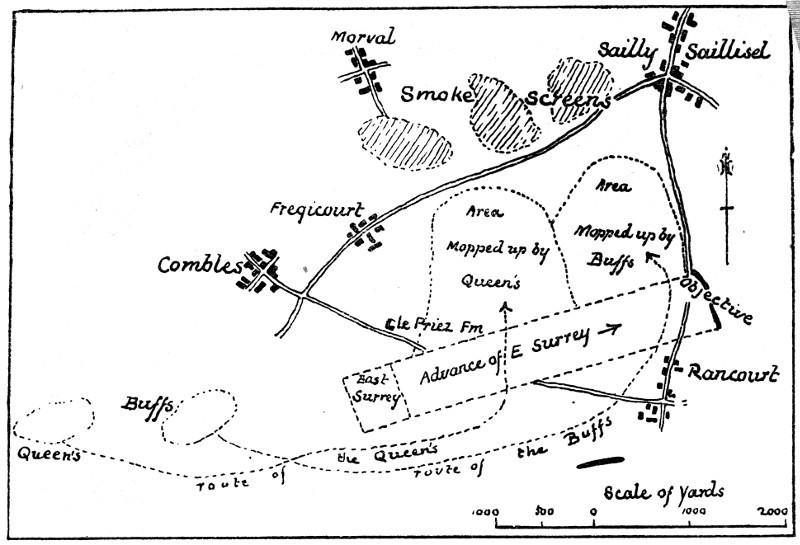
COMBLES AND MORVAL
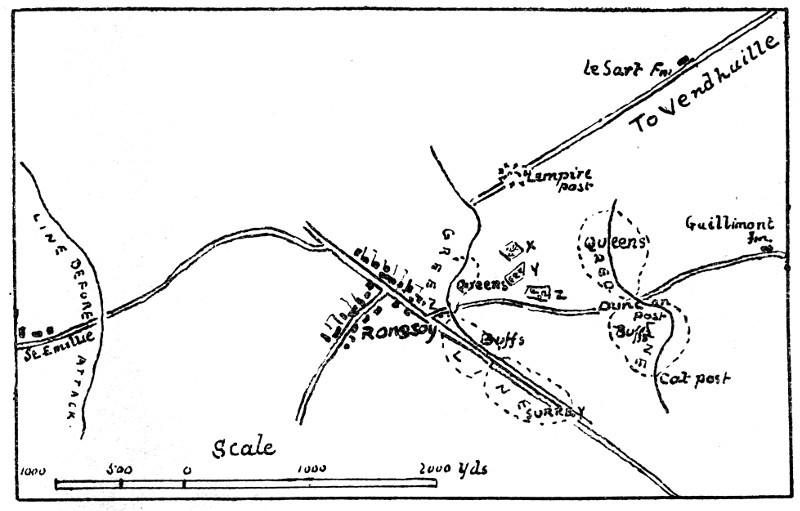
RONSSOY
The 37th Brigade passed through the 35th with the 6th Buffs on the right and West Kent on the left. The 9th Battalion of the Essex were attached to the Buffs and the 6th Queen’s to the 6th West Kent. The objective of the brigade was a line just west of the St Quentin Canal. The zero hour was 5 a.m. when, after a short artillery barrage, the forward move was commenced, the Buffs having A Company on the left, B on the right, C left support and D right support. Owing to the very strong resistance of the enemy, mostly by means of machine guns, the progress was rendered very slow, but at 8.45 the Buffs reported all going well, and at 9 o’clock the Americans were on all objectives. As the canal was approached the opposition became stronger, and this was particularly so at the Quarries, which fell to the lot of the Buffs to take. Indeed, at 10.30 the battalion had to report its left company as being held up here. However, delay was the worst misfortune that befell; gradual advance was made and the objectives were at length reached about 5 p.m. and consolidated after really stubborn fighting, which lasted
all day without a break. The Buffs were, however, the only unit of the division that had attained the Blue Line. They captured 120 prisoners and about 40 machine guns, but lost Lieut. H. Thompson killed, Lieut. Dunkerley wounded, 2nd Lieut. Beard missing and about 40 killed or wounded.
The following day the battalion, working forward, reached the canal bank, having picked up four prisoners on the way, captured a 77-mm. gun and bombed many of the enemy’s dug-outs.
The 12th Division was then relieved by the 18th, the 6th Battalion marching back to Guyencourt, while the 7th, who had marched off at 8.20 a.m. on the 29th and, moving south of Epehy, crossed the Epehy-Ronssoy road into St Patrick’s Valley, where it halted about 10.10 a.m. Orders were then received to push on into the Macquincourt Valley to a position of deployment, but trouble came now and the further movements of the newly arrived battalion of the Buffs and others were altered more than once by varying circumstances, the end of the day coming without any marked episode, and evening finding the men in Sart Farm and the neighbouring trenches. The Buffs had moved forward according to order, following the 7th Queen’s, and these were held up by enemy’s machine guns near Guillemont Farm. Further movements not being possible, orders came to occupy an area of trenches in the neighbourhood. An abortive attempt at attack on the Knoll was commenced soon after one o’clock, but the situation was found to be too obscure and the fire too hot to advance against, so the brigade settled into the trenches for the night. During the morning of the following day an officer’s patrol from A Company pushed on and established a post in Macquenet trench, and orders came about 1 p.m. to make all progress possible in the direction of Vendhuille, so by 5 p.m. A Company was established in Macquenet trench, losing its leader, Lieut. A. N. Widdop, while moving there, and B and C well forward; but at night the battalion position was taken over by the East Surreys and the Buffs were placed in brigade reserve, and on the 2nd October were taken away to Contay, some ten miles west of
